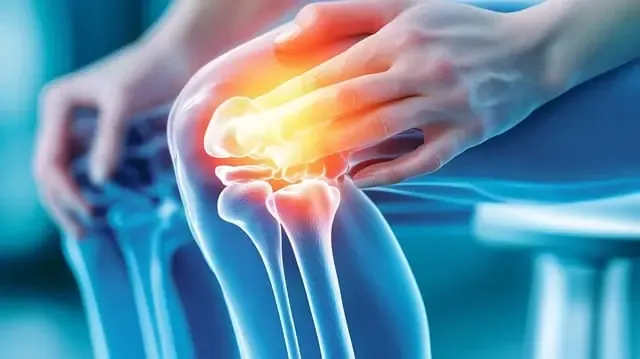what are treatments for knee pain?
How Genicular Arterial Embolization offers new hope for osteoarthritis patients, providing significant relief from knee joint pain and inflammation.
Genicular Arterial Embolization: A New Hope for Knee Pain Relief
Good News for Patients with Joint Pain
Patients suffering from joint pain have received good news: small plastic particles are being injected into the knee joints to alleviate their discomfort. In the UK, to use this remarkable technique, the knee is first numbed with medication. Patients are required to spend a few hours in the hospital before they are allowed to go home. The only concern might be that there may be a mark on the knee for a while.
Treatment Process Named Genicular Arterial Embolization
This treatment method, called Genicular Arterial Embolization, has been used to treat around 40 patients suffering from knee joint pain. The experiment is being conducted under the Royal Berkshire NHS Foundation Trust and the University of Reading. Two-thirds of the patients who underwent this treatment reported a significant reduction in swelling, and more than half said that their pain had improved.
Understanding Osteoarthritis and Its Effects
In the UK alone, about ten million people are affected by osteoarthritis. This disease occurs when the inner walls of the knees, known as the synovium, become swollen and painful. As a result of this condition, the knee stops functioning properly, leading to the wear of the cartilage that supports the edges of the bones, which increases pain due to bone friction.
Professor Mark Little’s Initiative
Radiologist Professor Mark Little from Reading's Royal Berkshire Hospital has initiated this new experimental treatment for arthritis. He noted that the defective blood vessels that form in the synovium release chemicals that cause knee pain and inflammation. If these blood vessels are blocked, it might reduce the pain. This process is called embolization and is also used to treat other conditions, such as enlarged prostates, uterine fibroids, and liver tumors, as well as to stop excessive bleeding in accidents.
The Procedure and Its Benefits
During the treatment of knee pain, the patient’s knee is first numbed with an injection. Then, a needle is used to access an artery in the thigh. With the guidance of an X-ray machine, a thin, hollow tube is led to the main blood vessel that supplies blood to the knee. A small amount of fluid containing sand-like plastic particles is injected through a catheter, stopping the production of chemicals that trigger inflammation, thus reducing pain and swelling.
Professor Little’s Belief in the Treatment
Professor Mark Little stated, "If we can stop these chemical messengers where they form, we believe we can successfully stop inflammation and slow the disease’s progress." This treatment method could significantly reduce pain, and perhaps many people might not even need artificial knee replacements afterward. Although this technique may not work for every arthritis patient, it does provide hope and opens the door to a new option.
Ideal Candidates for This Procedure
This procedure is best suited for patients who are in the early to moderate stages of the disease and have not benefited from traditional treatments like pain medications and physiotherapy. It is particularly beneficial for those who are not yet considering knee replacement surgery.
Positive Impact on Patients' Lives
Many patients that Professor Little has observed are in their fifties or sixties and are enduring unbearable pain. This treatment could have a very positive impact on their lives. Notably, of the original 40 patients who underwent this procedure, 9 patients later opted for artificial knee implants, and 6 patients were found unsuitable for the procedure during the initial assessment.
Complications and Limitations
During recovery, one patient was unable to walk and required treatment for a blood clot in the vein, but other than that, very few complications were observed among the other patients. In 2021, the UK's National Institute for Health and Care Excellence (NICE) rejected this treatment method, expressing concerns about the lack of evidence for its long-term benefits.
Ongoing Research and Future Prospects
The team at Reading University is now working on a larger study involving 110 patients, with half of them undergoing a placebo procedure. They hope that this new research, along with similar experiments being conducted in Japan and the USA, will convince NICE to approve this procedure.








0 Comments
Dear Visitors: Please do not enter any spam link in the comment box. Thank you!